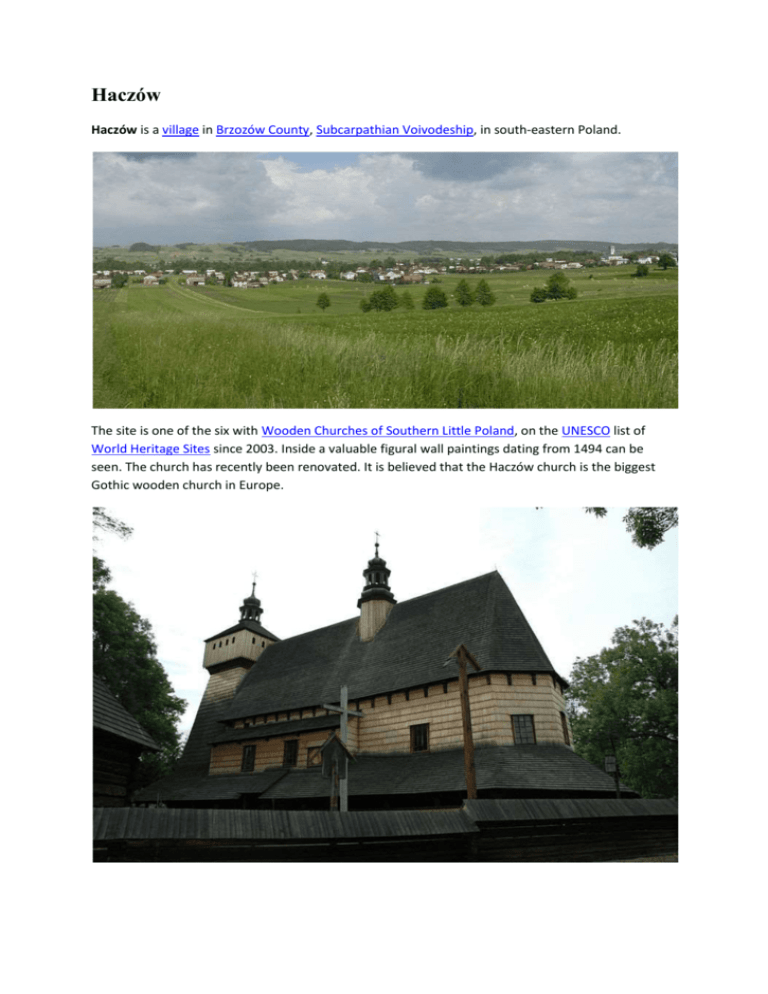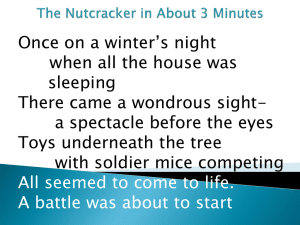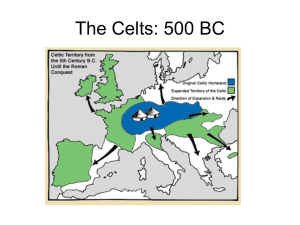Haczów is a village in Brzozów County, Subcarpathian Voivodeship
advertisement

Haczów Haczów is a village in Brzozów County, Subcarpathian Voivodeship, in south-eastern Poland. The site is one of the six with Wooden Churches of Southern Little Poland, on the UNESCO list of World Heritage Sites since 2003. Inside a valuable figural wall paintings dating from 1494 can be seen. The church has recently been renovated. It is believed that the Haczów church is the biggest Gothic wooden church in Europe. The former parish Catholic church dedicated to the Ascension of the Holy Virgin Mary and Archangel Nicolas dates back to the 1st half of the 15th c. This temple is the largest wooden Gothic church in Europe and also the oldest wooden church built by using the horizontal log technique in Poland. It is located on the trail of wooden architecture in southern Poland and on the UNESCO World Heritage list. The church was built in the late 14th century and later extended and renovated. As a place of religious worship it was used till 1948 but then began to fall into disrepair. In the 1960’s and 1970’s the church furnishings (altars, benches, paintings and other ornaments) were taken to the Museum in Sanok and the court in Kroscienko Wyzne. Before being entered on the UNESCO list the church underwent major renovation. Firstly, the wooden ceiling was replaced and new wood shingle put on the roof. Inside, the wall paintings from the end of the 15th century survived, which were supplemented by more recent paintings from the 18th and 19th centuries. Gothic art is represented by sculptures, including the Pieta from about 1400. It is worth noting, according to some research, the oldest wooden church in Poland is the temple in Tarnow Palucki near Poznan. The Church of the Assumption of the Blessed Virgin Mary - A wooden Gothic church built in the late 14th century. The church interior is decorated with a polychrome dated from 1494, which was discovered in 1956 during the restoration works. In the 17th century, a Baroque tower was added to the existing church structure. It is the largest Gothic wooden church in Europe and also the oldest wooden church in Poland. In 1948, the services were moved to a new church which was built shortly before World War II. In 2003 the church along with the church in Blizne, and many other historical wooden churches of Little Poland were placed on the UNESCO list of world heritage site.









